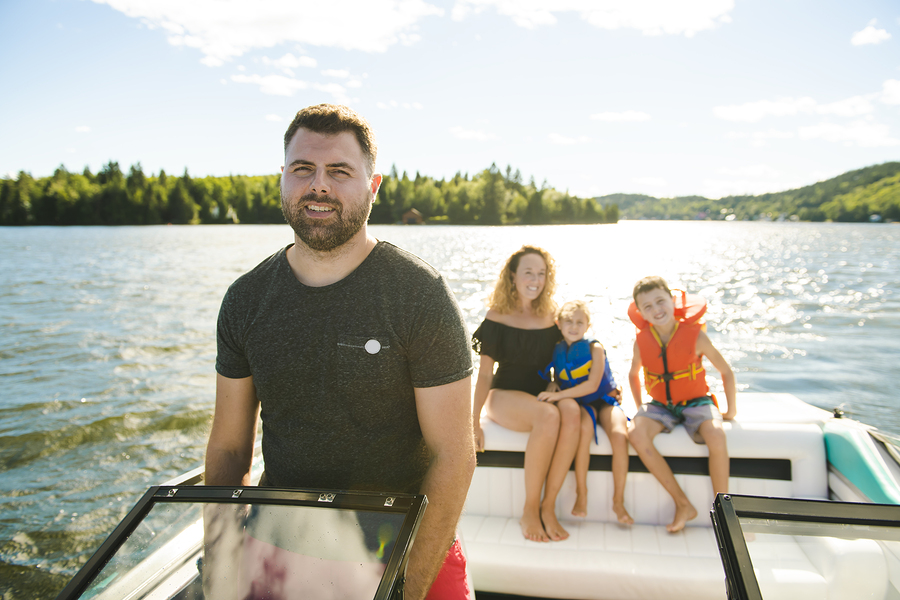Boating Safety FAQ

As you head out on the lake or ocean for summer, you want to have a great time: to enjoy the sun, splash in the water, and time with friends and family. In order to have the best time possible, however, you should carefully consider safety before heading out on your boat. Check out these boating safety FAQs to keep your time on the boat this year safer for everyone involved.
Does Everyone on the Boat Have to Wear a Life Jacket?
Wearing a life jacket, or a personal flotation device, can significantly increase safety in the event of an accident on the water. However, under Florida law, not every person in the boat must wear a life jacket at all times. Instead, children six and younger must wear a Type I, II, or III PFD at all times while on a boat less than 26 feet in length. While Florida law may not require everyone to wear a life jacket, life jackets can save your life and the lives of others on board. Most people who die in boating accidents die by drowning. A life jacket can prevent that tragedy in choppy waters and confusing circumstances.
Not only must children six and under wear a life jacket when they are in a boat, everyone in the boat must have access to a US Coast Guard-approved life jacket. Several rules govern life jacket presence:
- The boat must contain a personal flotation device for every person on board.
- The devices should remain in serviceable, in usable condition at all times.
- Life jackets should fit the individuals on board: too small or too large and they will fail to provide the proper buoyancy for the passengers on the boat.
Do I Need Boat Insurance?
If you plan to take your boat out on the water, regardless of who you plan to transport, you need boat insurance to protect you, your passengers, and others on the water. Like car insurance, boat insurance provides vital protection if you suffer an accident on the water. Boat insurance can help cover damage to your boat, damage to others’ boats, and injuries to your passengers or passengers of other vehicles.
How Can a Float Plan Help?
Any time you go out on your boat, you should give someone your float plan. A float plan describes when you will leave, where you plan to go, and when you intend to come back. While you need not stick precisely to every element of your float plan, you should amend it any time you make a major change to your boating plan, especially on long trips. A float plan ensures that someone will know your plans and notify the Coast Guard if you fail to return. The float plan should include vital information that will make locating your boat easier if you do not return as expected, including:
- A description of your boat, including its vehicle registration number. Add a recent picture if you have it;
- Information about your destination;
- How long you plan to be out;
- Who plans to go with you;
- Emergency contacts for everyone on board your boat;
- Communication devices you have on the boat, including radios, phones, and other methods for summoning help if needed.
Most of the time, your float plan simply adds an item to your safety checklist. However, if something happens during your trip your float plan can significantly increase your odds of a successful rescue.
What Safety Gear Must I Carry on My Boat?
Safety gear can mean the difference between a minor mishap and a serious accident with injuries and damage. Carry the right gear on your boat to help protect you and all your passengers during a crisis, including:
- Life jackets for everyone on the boat;
- Fire extinguisher;
- First aid kit;
- Visual distress signal;
- Something that makes a loud noise to summon help if needed; and
- A communications device beyond your cell phone. Remember, you may struggle to get a good cell signal out on the water. If you crash, you may also damage or lose your cell phone.
Can I Drink Alcohol While Operating a Boat?
Like operating a vehicle on the road, operating a boat requires sobriety. If you choose to drink, it may impair your reflexes, decrease your common sense, and increase the odds of an accident. Make sure someone on your boat stays sober throughout the trip. That individual will have responsibility for operating the boat as well as keeping everyone else from making foolish decisions that could impact their safety or the safety of others on the trip.
What Are the Symptoms of Carbon Monoxide Poisoning?
Your engine produces carbon monoxide as it runs. Most of the time, the fumes dissipate quickly, without causing problems. If you can smell exhaust, however, you can breathe carbon monoxide. It takes only seconds for carbon monoxide to create dangerous symptoms in you and your passengers. If possible, avoid poorly-ventilated areas of your boat and stay in areas with good airflow or areas far away from the engine. Look for these symptoms of carbon monoxide poisoning, and act fast if you suspect a problem:
- Headache, especially suddenly-occurring headache in more than one passenger;
- Nausea;
- Dizziness;
- Breathlessness;
- Difficulty remaining upright; and/or
- Loss of consciousness.
Many early symptoms of carbon monoxide poisoning mimic seasickness. In order to protect yourself and your passengers, install a carbon monoxide detector on your vehicle. If you suspect CO poisoning, open all hatches and ports to help ventilate the boat. Remove the person from the area, get them to open air, and seek medical attention as soon as possible so that a doctor can address their symptoms. In some cases, CO poisoning can cause death.
Did You Suffer Injuries in a Boating Accident?
If your summer fun turned sour due to a boating accident with significant injuries, you may need legal help to receive appropriate compensation. Contact The Florida Law Group today or call us at (813) 463-8880 to set up your free consultation and learn more about the compensation you deserve for your injuries.


